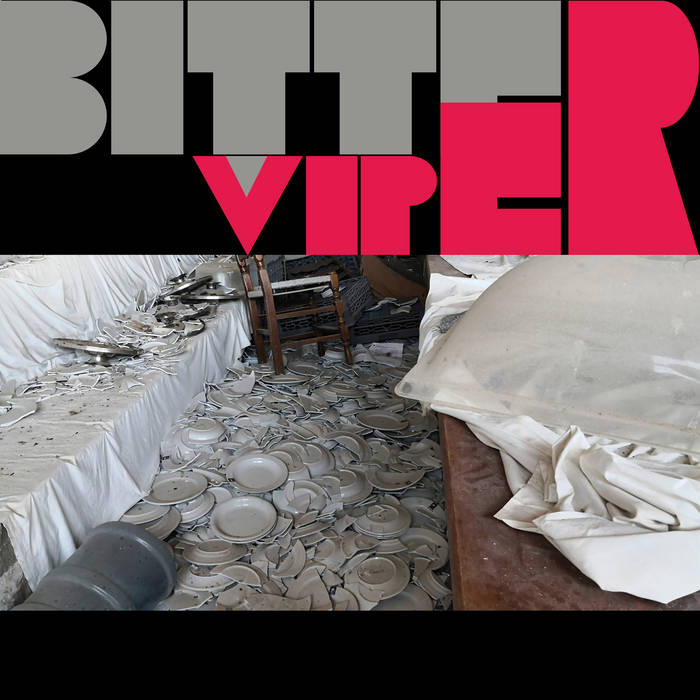Although David Grubbs has worked with all of the musicians who join him in Bitterviper, they’ve yet to all gather in a single place. Still, they all seem highly attuned to what one another does. The quartet’s eponymous debut was produced through file sharing, an accretive process set in motion by lush, often psychoacoustic solo cello lines and patterns played by the Athens-based Nikos Veliotis and subsequently layered with sounds by Grubbs, Japanese electronics master Taku Unami, and percussionist-composer Sarah Hennies. Across four gorgeously contemplative, deeply spacious pieces the ensemble achieves a stunning cohesion, even without considering that everything we hear was produced in four different locales at different times.
The music is generally marked by a meditative strain of exploration, as long tones and subtly transforming drones quietly ripple with microscopic variations, but Grubbs – who toggles between electric guitar and piano – often adds accents and terse melodic tattoos, injecting contrapuntal figures to the mewling, texture-rich fabric of sound that forms the core of Bitterviper. On the opening track ‘Bird of Prey Beaten Back’ there’s a steady tension produced by the viscous bowed cello, machine-like low-end synthesizer churn, and the steady rain-like patter of a hushed staccato cymbal part, with Grubbs weaving in terse but limpid guitar fills, interrupting the hovering placidity like a pebble skipping across a still pond. The piece proffers a kind of model for what follows, as the richly striated sonic foundation is flicked and caressed in various ways by Grubbs
Some instrumental shifts brings something different with ‘Pillows Plumped for the Guests’, the bowed tuned percussion of Hennies initially forming a harmonic bond with the long tones of Veliotis; a delicate, richly marbled drone occasionally throttled by Unami’s low-end electronic undulations and finely proportioned cymbal sizzles. Grubbs adds elliptical piano phrases that can disguise how much change occurs beneath, but close listening reveals an endless transformation with synth modulations and coolly rippling vibraphone swells.
‘In Vivo Receptor’ opens with a single doleful cello line, but a second complementary cello part opens up a relative floodgate of activity, with Hennies behind a drumkit slowly building rising and falling cymbal chatter and attention-grabbing kick drum beats. Grubbs paints the landscape with parched, reverb-heavy guitar chords that drift and meander, and with Unami thickening up the sustain down below it almost sounds like a time-stretched post-rock track, imbued with an ominous undercurrent, until it opens up in the closing moments, with Grubbs locking in on a cycling guitar riff. The closing piece ‘Gravity Does Its Worst’ transmits vaporous ambience within deeply varied sections cleaved by extended passages of silence, allowing for steady recalibration, as if the music never stopped happening; only our access to it drops out, here and there. At the start Grubbs injects a sorrowful twang over a pulsating bed of cello harmonics and ghostly synth, while toward the end Hennies clanks stones in a gagaku-ish style over a drone pierced by upper register noise. It’s a wonderful album, distinguished by the sort of painterly detail endemic to the work of each musician. Imagine what they could do if they all got together in the same room.


